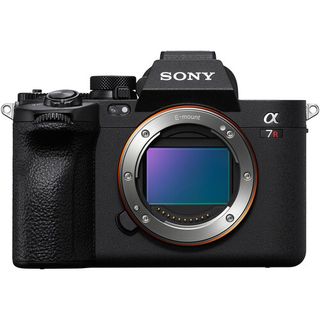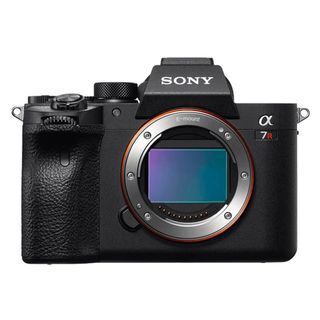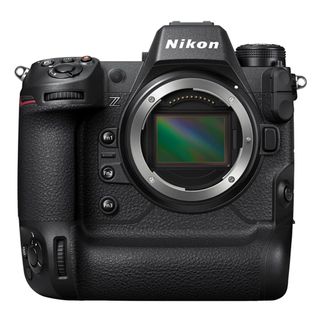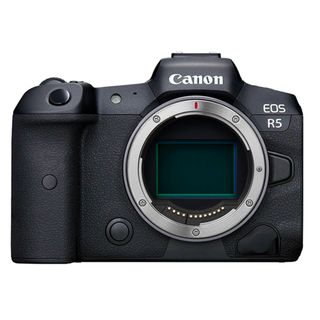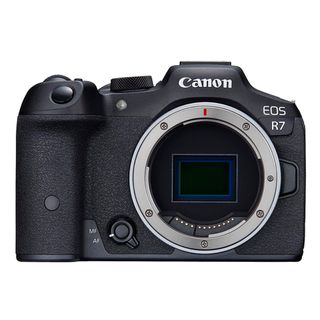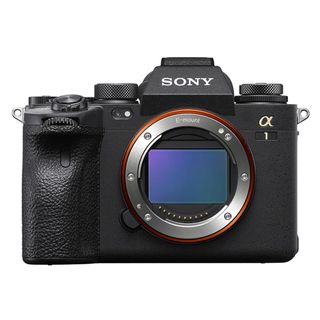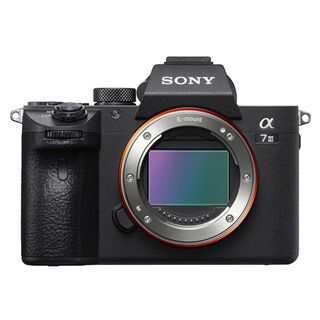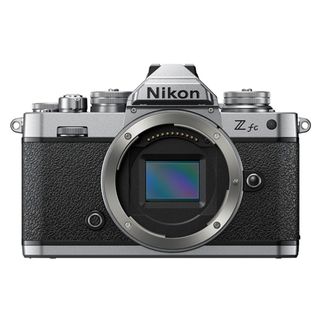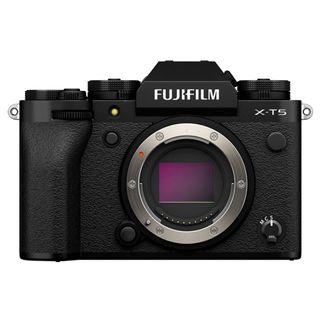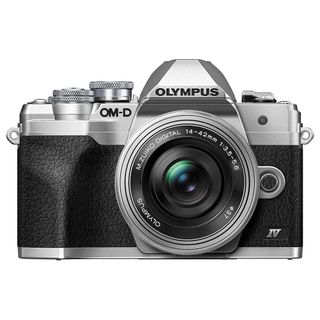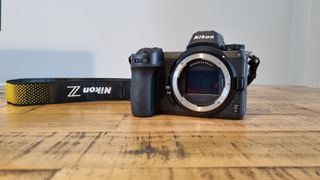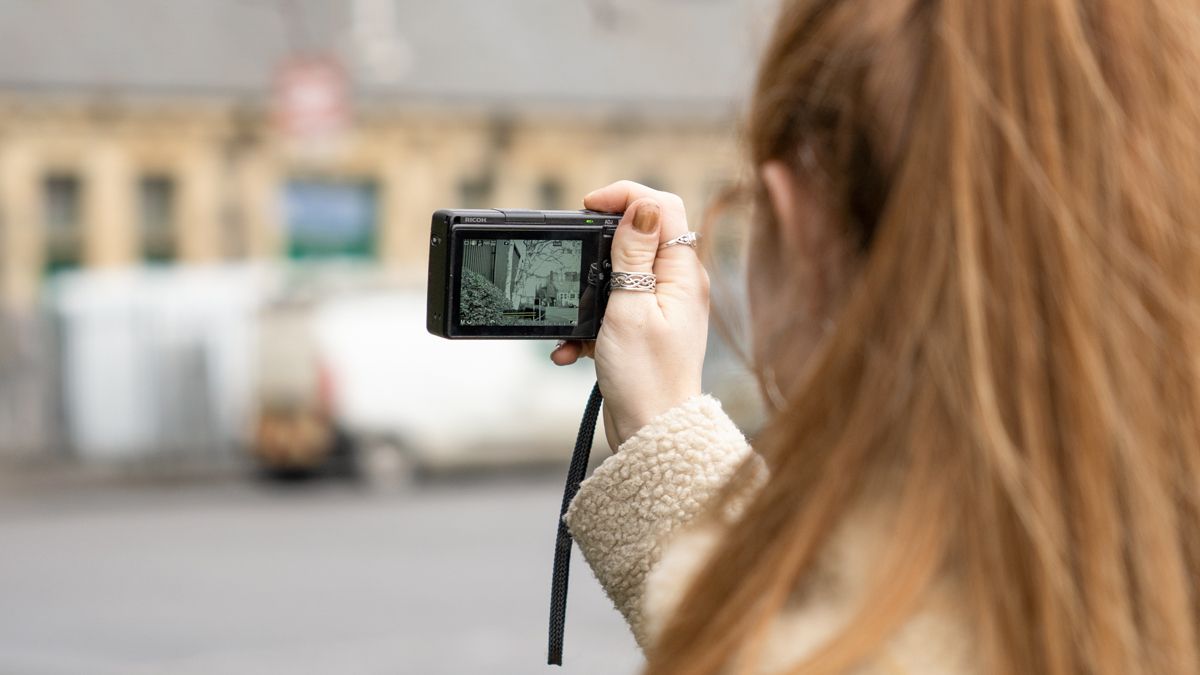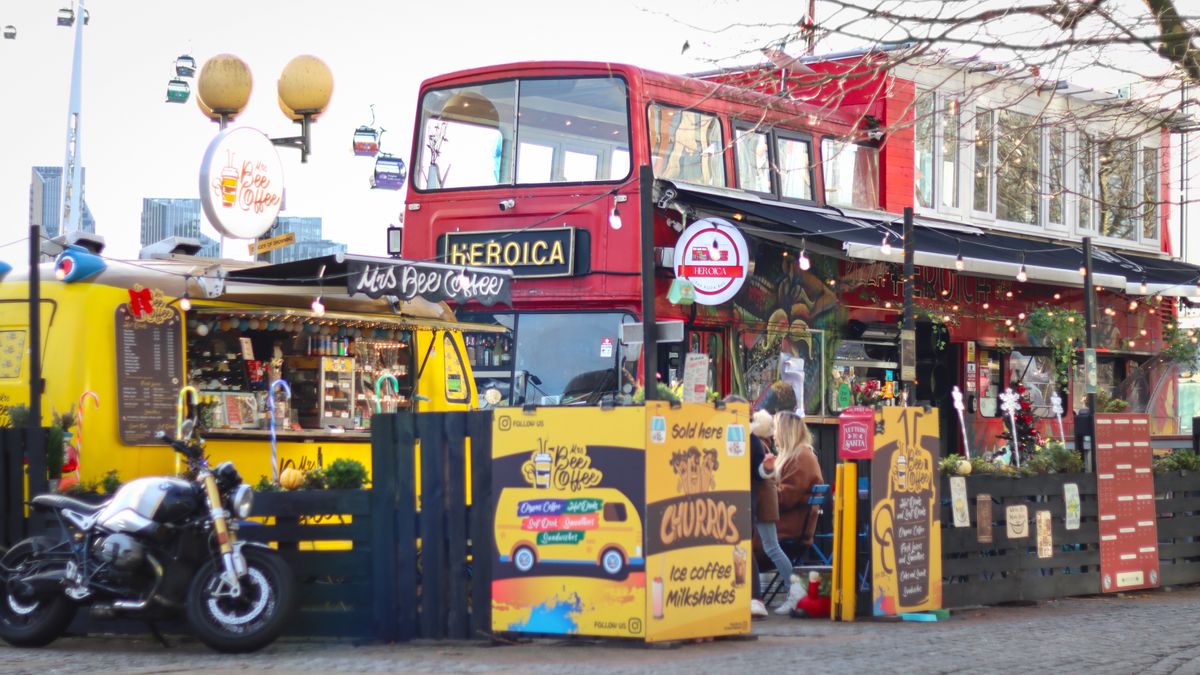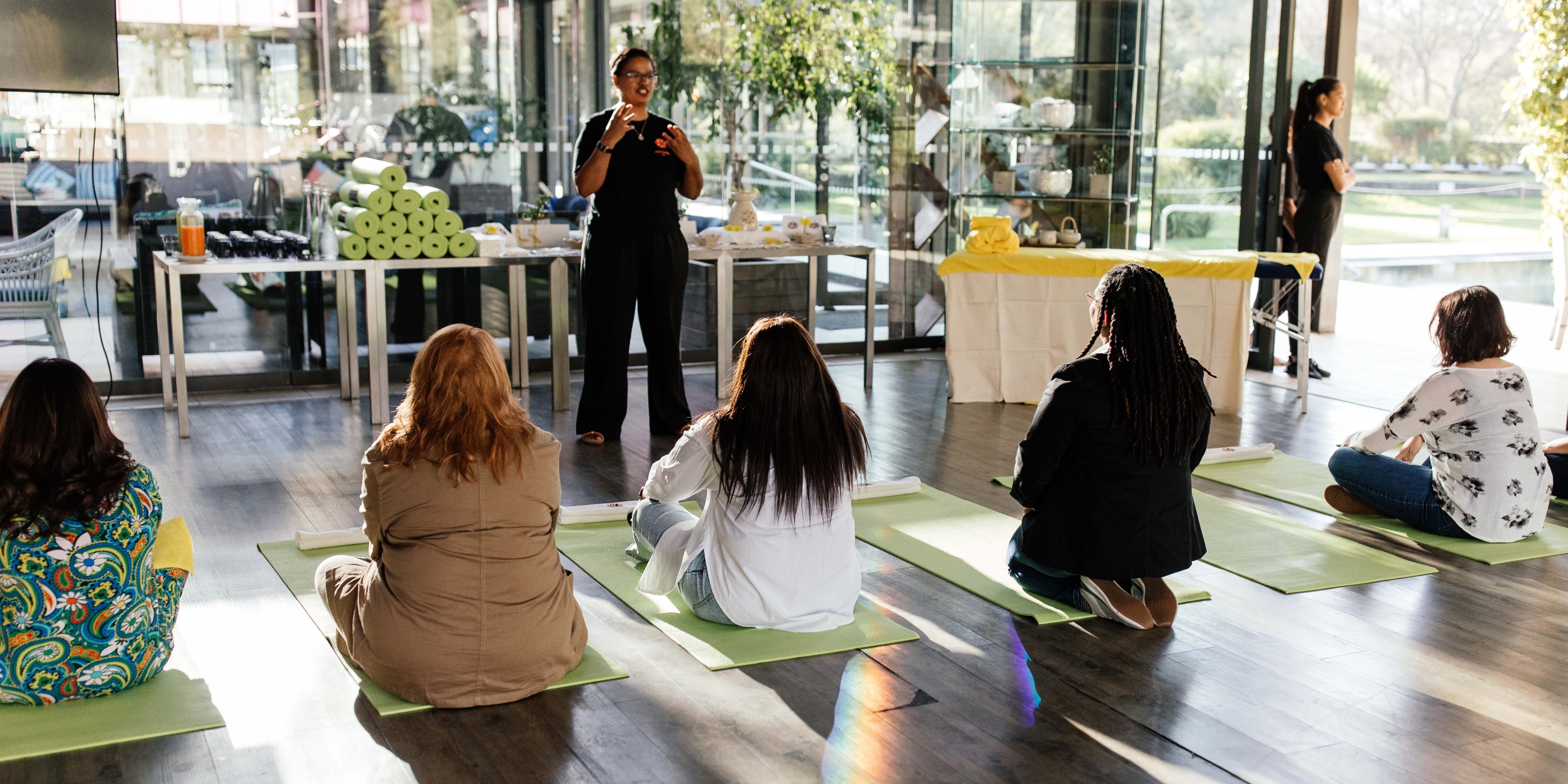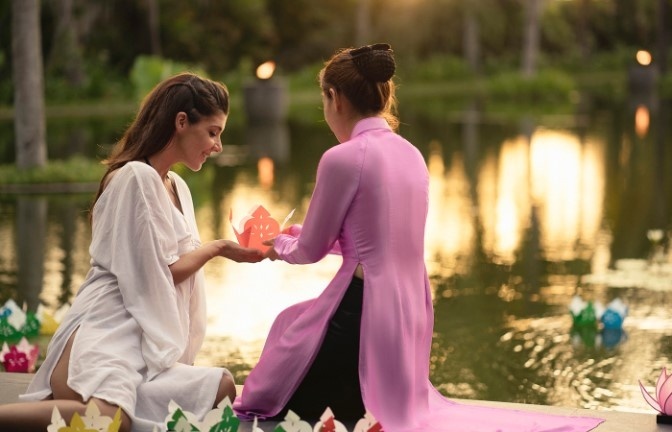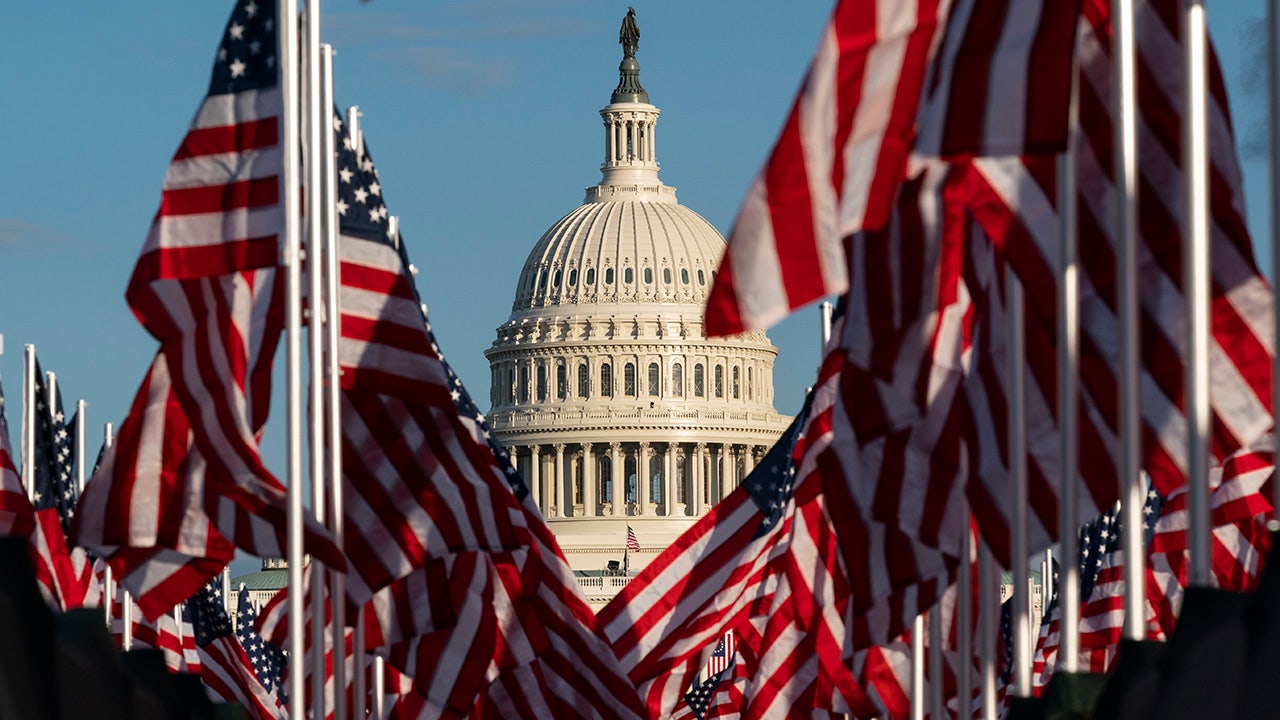Best cameras for photos and videos 2023

Using one of the best cameras for photos and videos will undeniably give photographers the best possible chance to capture fabulous shots, whether a full-frame, crop sensor or micro four-thirds, mirrorless, or DSLR camera. Even that list might feel overwhelming, and within each of those categories, there are countless models to choose from.
To help you narrow your search, our experts at Space.com have done the bulk of the hard work for you. We’ve put each camera through our rigorous review process and compiled this list of our favorites from every camera brand. We’ve also highlighted which type of photographer and styles would benefit from each model the most. We’ve covered all budgets and experience levels, so we’re certain there will be something for you that will help you push your photography to the next level.
While this guide covers multiple photography disciplines, we have other, more tailored guides too, such as the best cameras for astrophotography, the best mirrorless cameras or the best DSLR cameras. If you’ve already purchased your camera and are now looking for accessories like one of the best camera backpacks or a travel tripod, or perhaps you’re looking to pair it with one of the best lenses for astrophotography or the best zoom lenses, we have guides for those too.
Best cameras for photos and videos we recommend in 2023
The quick list
Here are our top picks in a ‘quick view’ layout. For more information about each camera, scroll down. From there you can click through to our hands-on reviews.
The best mirrorless camera overall
We can’t think of a camera that is more versatile. It’s best for professional shooters with a big budget, but it is more than capable in all shooting scenarios.
Read more below
Best full-frame resolution
The successor to the popular A7R IV, this camera does everything the previous model did and more, with class-leading AI-based autofocus and hugely detailed images.
Read more below
Sony A7R IV mirrorless camera
Best hybrid camera
This previously sat at the top of our best cameras list thanks to its fast autofocusing and massive 61MP full-frame back-illuminated CMOS sensor and 4K UHD 30p video.
Read more below
Best for professional shooters
This is a video shooting powerhouse with superb battery life and a rugged body that’s built to last, regardless of the weather conditions.
Read more below
Best Canon camera
The Canon EOS R5 feels great in the hand, and the image stabilization and fast autofocus make it a pleasure to shoot with. It is quite expensive and the features are overkill for casual shooters.
Read more below
Best for travel
This small and lightweight camera features excellent autofocus and tracking — it is a pleasure to shoot with. Travel vloggers will appreciate the eye tracking and autofocus, as well as the lack of recording limit.
Read more below
Load the next 6 products ↴
Best pro-level Sony
Mindblowing specs and performance but with a huge price tag to match. It is extremely versatile and boasts an impressive 50.1 megapixels as well as 8K 30P video.
Read more below
Best DSLR
Despite being an old DSLR camera, this camera still holds its own. The impeccable weather sealing makes it robust and durable and it offers an incredible 45.4MP stills and 4K UHD 30p video.
Read more below
Best value mirrorless camera
Though this is an older model, it’s the perfect camera for low-light shooters — this could be astrophotography, indoor sports or indoor weddings. The battery life is huge too.
Read more below
Best for beginners
This lightweight camera is suited to candid street photography thanks to its super quick power-up time. Its retro design will appeal to many and it’s easy to use. It boasts a great sensor (the same as the Nikon Z50) for the price point.
Read more below
Best generalist camera
The Fujifilm X-T5 is another small-bodied camera that is a good all-rounder. It has a classic aesthetic and features two SD memory card slots for peace of mind. It boasts impressive low-light performance.
Read more below
Olympus OM-D E-M10 Mark IV
Best Micro Four Thirds camera
This camera weighs less than 1 lb but is still packed with useful functionality, so is a great everyday or travel camera. The autofocus system is fast, there are five stops of in-body image stabilization and the large LCD screen is remarkable.
Read more below
Best cameras we recommend for photos and videos 2023
Best overall
Buy it if:
✅ You can afford it: This is a big investment but it’s worth it if you’ll be in the industry for years to come.
✅ You shoot stills and video: This camera is just as impressive at both of these tasks
Don’t buy it if:
❌ You’re looking or something lightweight and portable: This model is significantly heavier and bigger than its predecessor. It looks and feels like a professional camera.
The bottom line:
🔎 Nikon Z8: Professionals need to look no further — if you combined all the best parts of the flagship Nikon Z9 and the best DSLR in the world, the Nikon D850, you’d be left with this heavy-hitter; the Nikon Z8. ★★★★★
Wow, what can we say — this is the go-to camera for professionals who earn a living from their photography and shoot a range of styles or enthusiastic casual shooters with a sizeable budget (around $4000) to play with. It is the perfect blend of ‘all the good bits’ of the incredible Nikon D850 DSLR and Nikon’s flagship Nikon Z9.
This camera performs excellently in both video and still photography, capturing high-quality video formats such as N-Log, ProRes, and Raw HQ data. It also handles noise exceptionally well and can take photos up to an insane 120FPS, making it ideal for indoor sports, concerts, weddings and other events. But, keep in mind that this camera is pretty big and heavy to hold.
For astrophotographers, Nikon has even included a customizable night vision mode that dims the rear screen and electronic viewfinder and displays red pixels to help preserve your night vision. It can focus down to -9EV in starlight mode, which is unheard of.
This is an incredible camera, and you can read more of our thoughts in our gushing Nikon Z8 review. It’s simply the best camera body on the market right now — it performs so well across the board and while there are some worthy competitors, we can’t think of another camera that matches its versatile prowess.
| Attributes | Notes |
|---|---|
| Design | Outstanding build quality, but it’s big and heavy. |
| Performance | Starlight mode enables autofocus detection down to an unheard of -9EV. |
| Functionality | Night vision mode for astrophotographers. |
Best full-frame resolution
Buy it if:
✅ You shoot portraits or weddings: The new AI-based autofocus system is on another level and makes shooting people easier than ever.
✅ You shoot multiple styles: This camera excels at most photographic styles and video, so if you like to shoot many different subjects then this could be the camera for you.
Don’t buy it if:
❌ You mainly shoot astro: We noted that due to so many megapixels, the images were very noisy. Fine for occasional astro with AI denoise in post-processing, but there are better options for astro.
The bottom line:
🔎 Sony A7R V: The Sony A7R V builds on the power of its predecessor with its higher resolution EVF and LCD screen, more stops of image stabilization and a new AI autofocus unit, but the massive 61MP sensor provides too much noise for astrophotography. ★★★★½
The new Sony A7R V is a breath of fresh air in the photography world. We weren’t sure how they could improve on the A7R IV, which used to sit in this place on this list, but we think this new model has blown it out of the water.
It comes with a new AI-powered autofocus system designed to recognize human movements, poses and various body parts, anticipating the subject’s potential movements. Additionally, it efficiently tracks subjects such as cars, trains, planes, animals and insects.
It features 8 stops of image stabilization, which is especially effective in low-light conditions. In our Sony A7R V review, we successfully captured clean and sharp handheld shots at ISO 100 with a shutter speed of 1/3 second. However, when we used it for astrophotography, we noticed some noise in the images, which is to be expected with a 61MP sensor. While the noise could be cleaned up in editing software for occasional astro images, it might become tedious for frequent astrophotography enthusiasts.
Another feature we loved was the 4-axis, multi-angle LCD screen. It’s incredibly detailed but also combines tilt screens with fully articulating screens, meaning you can achieve quite literally any angle you want to while still keeping the screen away from the ports on the side of the camera. Finally!
It’s certainly an investment, but for the amount of tech you get, we think it’s worth every cent and will last for years.
| Attributes | Notes |
|---|---|
| Design | Most versatile LCD screen yet. |
| Performance | Sony’s autofocus just keeps getting better thanks to the new AI system. |
| Functionality | Eight stops image stabilization proves great for low light. |
Best hybrid camera
Buy it if:
✅ If you shoot lots of portraits, weddings or studio work: This is one of the best cameras you can buy, it’s excellent in low-light and there are many customizable buttons to get your set up just right.
✅ You dabble in astrophotography: This camera would be a perfect match for astrophotographers of any skill level. You can use the shots right out of the camera up to ISO 6400 before you start to see any unfavorable noise.
Don’t buy it if:
❌ 61 megapixels might be overkill: Many photographers won’t need this level of detail (or file size) and can save money on lower-resolution cameras.
❌ You want to shoot fast action sports: There are other cameras with higher burst speeds.
The bottom line:
🔎 Sony A7R IV: Despite the big price tag, this is an incredible camera in a class of its own. For landscape photographers, studio portraits, or professional wedding photography, this is a fantastic choice. ★★★★½
With its massive 61-megapixel sensor, the Sony A7R IV excels at capturing intricate details even in challenging low-light conditions, making it a top choice for astrophotography and various other photography genres. Its exceptional low-light performance has also earned it a spot in our best cameras for low-light photography guide. Handling 61-megapixel images can be demanding on memory cards and computer storage, but you do have the option to switch to a more file-friendly 26-megapixel APS-C sensor with a 1.5x crop factor.
In our hands-on Sony A7R IV mirrorless camera review, we found that even though the subtle upgrades following the Sony A7R III don’t look like much on paper, they made a world of difference when it came to using it in the real world. The improved hand grip makes it much nicer and more comfortable to hold; it has more prominent and, thus, more tactile buttons, which are particularly helpful when operating with cold fingers or while wearing gloves.
The Sony A7R IV is not cheap, but if you want to make a long-term investment, you won’t find much better for shooting weddings, portraits, studio work and landscapes. Plus, now that it’s not the newest model in the A7R range, it’s come down in price a bit compared to when it was first released, and we anticipate that it’ll be discounted even more in the Black Friday and Cyber Monday deals.
This camera used to sit at the top of this guide, but after the release of the Sony A7R V and its impressive new features and improvements, we’d now recommend this as a good option if you can’t quite stretch your budget to the A7R V but still want a fantastic, high-resolution hybrid camera.
| Attributes | Notes |
|---|---|
| Design | Superb build quality. |
| Performance | Bright, sharp and colorful images. |
| Functionality | High megapixel sensor means more image noise. |
Best for professionals
Buy it if:
✅ If you’re going to shoot lots of fast action: The ‘People AF’ mode is eerily good at picking out eyes and faces, making capturing human motion easy and accurate.
✅ If you also shoot video: Its video capabilities are just as good as stills. The two CF card slots mean you can shoot hours of footage at 8K 60FPS.
Don’t buy it if:
❌ You are an astro shooter restricted by budget: You could buy a cheaper camera such as the Nikon Z7 II, pair it with a specialized lens and get similar results.
The bottom line:
🔎 Nikon Z9: An absolute monster for stills and video, the Nikon Z9 is a brilliant astro camera. However, it comes at a high price and with features more suited to other photo styles like weddings and wildlife, it may be overkill for night sky photographers. ★★★★½
The Nikon Z9 is one of the best-performing digital cameras ever made, and in our Nikon Z9 review, we gave it a highly respectable four and a half out of five stars. Because of the price of this camera, it’s realistic to say it’s really only for professionals who earn their living taking photos or videos, as it is excellent at doing both.
It’s ideal for capturing fast-paced moments in sports, wildlife, weddings and events, thanks to its outstanding burst shooting capabilities. It can shoot at an impressive 20FPS in RAW format and an astonishing 120FPS in lower-quality JPEG. With this camera, you won’t miss any crucial shots. Additionally, it excels at recognizing and tracking faces and eyes.
Although this camera is fantastic, we think it would be overkill for astrophotographers who only shoot astro. Nonetheless, it would be fabulous for the occasional astro shoot combined with the photography styles we’ve discussed above.
The hefty battery on the Z9 is incredibly long-lasting. Even when we tested it while shooting over three hours of astrophotos, it lost less than 20 percent.
The range of connectivity options is also impressive. There’s Snapbridge file transfer, Wi-Fi and Bluetooth, ethernet connection and USB-C. What more could you need?
| Attributes | Notes |
|---|---|
| Design | Heavy, solidly built body. |
| Performance | Excellent astro performance. |
| Functionality | As capable at video as it is at stills. |
Best Canon
Buy it if:
✅ If you’re a semi-pro photographer looking to upgrade: This is a camera for life; it’s one of the most complete cameras Canon has ever produced.
Don’t buy it if:
❌ You are a filmmaker: There have been problems with overheating when recording lots of video.
❌ You don’t like to carry spare batteries: The battery life is a little disappointing when compared with competitor models.
The bottom line:
🔎 Canon EOS R5: One of the best cameras on the market at the moment and possibly Canon’s finest-ever technical achievement. A superlative but very expensive package. ★★★★½
The Canon EOS R5 has outstanding features for multiple photography styles and needs. It boasts a 45MP CMOS full-frame image sensor and, as mentioned in our Canon EOS R5 review, we think it has one of the best autofocus systems we have ever used.
This camera performs excellently when it comes to tracking faces, eyes and even head movements, making it one of the top choices for sports and action photographers. Portrait photographers will also appreciate it, especially at events like weddings where capturing every moment matters.
It excels at revealing fine details even in low-light situations, thanks to its impressive 15-stop dynamic range and excellent noise control. For astrophotographers, it captures plenty of data that you can enhance during editing. Additionally, it can record beautiful high-quality 8K RAW videos.
The large flip-around screen is ideal for vloggers and content creators since it eliminates the need for any additional monitors while recording. This is one of Canon’s most complete packages, and we wouldn’t hesitate to recommend it, provided you can stretch your budget that far.
| Attributes | Notes |
|---|---|
| Design | A heavy, sturdier design than some other mirrorless cameras. |
| Performance | Superlative resolution and image quality. |
| Functionality | Battery life is slightly compromised. |
Best for travel
Buy it if:
✅ You’re a casual vlogger: The screen fully articulates which is great for vlogging and selfies. No more guesswork.
✅ You want to produce razor-sharp images: This camera’s performance is incredible. You’ll be able to shoot beautiful color-rich images, even in low light.
Don’t buy it if:
❌ You are a filmmaker: There have been problems with overheating when recording lots of video.
❌ You are an astrophotographer or want lots of lenses: The range of APS-C lenses (RF-S) is seriously limited. You can use full-frame RF lenses but you’ll have to be mindful of the 1.6x crop factor, not good for astro.
The bottom line:
🔎 Canon EOS R5: A powerful crop sensor camera that can get near full-frame results and can handle almost anything you throw at it with ease. We love it. ★★★★½
During our Canon EOS R7 review, we were pleasantly surprised with the handling and image quality of this APS-C mirrorless camera in several different scenarios — it was an absolute pleasure to shoot with.
While marketed primarily for wildlife photography, this camera is versatile across various disciplines. Its low-light performance impressed us; even at an ISO of around 6000, there was barely any noticeable noise, and the pictures were vivid and accurate in color
This camera is small and easy to carry, making it a great choice for travelers and vloggers. Vloggers will particularly appreciate its reliable eye tracking and autofocus, as well as the fact that it can capture stunning video footage without any time limits.
The only drawback we noticed was the slow buffer-clearing speed. However, if you’re shooting astrophotography or landscapes, you typically don’t need to shoot anywhere near the full 30FPS it’s capable of. But if you’re planning to photograph fast-paced events like motorsports or wildlife, you’ll definitely need to invest in faster memory cards.
This camera has almost everything a full-frame camera has but at a reasonable price and in a compact body — we think it more than holds its own in comparison. If you want a lightweight Canon that’s also full-frame, take a look at our Canon EOS R8 review. We gave it four and a half out of five stars.
| Attributes | Notes |
|---|---|
| Design | Small and lightweight for travel. |
| Performance | Impressive tracking. |
| Functionality | Up to 30FPS — provided you have a fast card. |
Best pro-level Sony
Buy it if:
✅ You can afford to: If you are fortunate to have the budget for this bit of kit, we can 100% recommend you go for it. It does everything.
Don’t buy it if:
❌ You are on a budget: The price point of this camera is realistically out of reach for many photographers. There are alternative cameras on the market that still produce exceptional images but cost a fraction of the price.
The bottom line:
🔎 Sony A1: This camera can do everything. But it is only really accessible to full-time professional photographers or amateurs with deep pockets. If you are fortunate enough to have the budget for it, then run, don’t walk. ★★★★½
This is possibly the one camera to rule them all — albeit with a price to match. At over $6000, this is realistically reserved for serious professionals who can earn money back from working in the business (or enthusiasts with incredibly deep pockets!).
The massive 50.1MP stills resolution, 8K 30p video, a generous 5.5 stops of image stabilization and a class-leading electronic viewfinder can all be used to create amazing photographs in any setting. This thing can do everything you’d ever need.
While the 50.1MP resolution is great in theory, not all memory cards or computer storage systems will appreciate it, especially if you’re shooting in drive mode. As with other newer cameras, you can switch to lossless compressed files which maintain pretty much the same image quality as regular RAW files, but it significantly reduces the file size by eliminating any unnecessary data from the image. This also helps speed up the buffer-clearing speed a little when you’re out shooting.
In our Sony A1 review, we especially liked the impressive dynamic range. It can happily handle different contrasts within an image, even if the foreground is shaded and the background is in sunlight. This lends itself well to astrophotography too.
Additionally, the Sony A1 has a bird mode AF that performs with the same level of accuracy as the human and animal modes, regardless of how little the bird is, making it a fantastic camera for wildlife photography. However, some of the newer Sony cameras now feature a more intelligent AI-powered autofocus system, which could make other options seem much more attractive than this absolute powerhouse.
| Attributes | Notes |
|---|---|
| Design | Tilt only screen is disappointing for the price. |
| Performance | Fantastic tracking and autofocus. |
| Functionality | Can handle anything you throw at it. |
Best DSLR
Buy it if:
✅ You’re going to be shooting astro: This is one of the best cameras for astrophotography, despite its age.
✅ You’ll shoot in very cold temperatures: The D850 is weather-sealed and made from magnesium alloy. The manual states it can shoot in temperatures 0 °C to 40 °C (+32 °F to 104 °F).
Don’t buy it if:
❌ You are looking for something light and portable: If this is one of your key criteria, opt for an inherently lighter mirrorless camera
❌ You’re worried about being left behind: This camera is now six years old, and most companies have or are phasing them out to focus on their mirrorless products.
The bottom line:
🔎 Nikon D850: A 45.4MP monster, the Nikon D850 will capture every single star you can possibly see and then some thanks to its wide ISO range. ★★★★½
If you need a camera that can do absolutely anything, then, as we discussed in our Nikon D850 review, don’t hesitate to get yourself this model. Even though it is already five years old, it can still compete with the top mirrorless cameras on the market. We like it so much we’ve featured it in our Best cameras for astrophotography, Best Nikon cameras for 2022 and Best DSLR camera guides.
It performs exceptionally well in various scenarios, especially when you pair it with one of Nikon’s many F-mount lenses. You can achieve a respectable 9FPS with an additional battery grip, which is great for capturing wildlife or sports photography, you can also capture incredibly clear portraits.
For those who prefer a more traditional photography experience, the camera features a sizable optical viewfinder that provides a real-time view of the scene, unlike a small screen. When it comes to video, the camera offers impressive 4K UHD recording at 30FPS. Additionally, you can create captivating slow-motion videos with 1080p at 120FPS, allowing you to slow down fast-moving action for a stunning cinematic effect.
This camera is built for professional use and has a price tag to match. It’s weather-sealed and tough enough to withstand some rough and tough without compromising on performance. It even has backlit buttons which eliminates the need for a headtorch during astrophotography, helping to preserve your night vision.
| Attributes | Notes |
|---|---|
| Design | Back-illuminated buttons for astro. |
| Performance | Wide-ranging ISO sensitivity. |
| Functionality | Lots of easy to access buttons and switches. |
Best value mirrorless
Buy it if:
✅ You’re looking for something compact: This is compact and affordable and versatile — great news for those who like to travel light.
✅ You’re an astrophotographer: This is one of the best cameras on the market for low-light performance. The high dynamic range is very impressive.
Don’t buy it if:
❌ You’d prefer to have the newer model: This one has been superseded by the Sony A7 IV, which supersedes the A7 III in every way — but that includes price.
The bottom line:
🔎 Sony A7 III: While the Sony A7 III gives advanced enthusiasts and even professionals a lot of camera for their money, it does have a few annoying handling niggles. ★★★★½
The Sony A7 III is an ideal camera for low-light shooting, thanks to its full-frame 35mm sensor, an autofocus range of -3EV and an expanded ISO range of up to 204,800. This isn’t limited to just capturing the night sky; it excels in indoor sports, portraits and challenging lighting conditions. Despite its 24.5MP stills, which may seem low for its price, this lower resolution is a key factor in keeping image noise exceptionally low compared to other models.
In our Sony A7 III review, we found that the remarkable images this camera can produce pack quite a punch despite its small form factor. It’s a flexible shooter, and to give it an in-depth review, we tested it in various environments, including a week-long photo tour of London and a commercial portrait gig. We loved its versatility and thought the eye autofocus was impeccable, but the AF tracking couldn’t quite keep up with a hyperactive puppy.
The A7 III excels at capturing high-quality video in 4K UHD at 30FPS. While its highest sensitivity for video is ISO 51200 and cannot go further with expanded options like in photos, its outstanding performance in low-light conditions makes this limitation negligible. With a single full charge, it can capture approximately 710 still photos, which is quite impressive.
Thanks to the wide and ever-expanding selection of E-mount lenses you can use with this camera, we think it’s incredibly versatile and suitable for various types of photography.
The Sony A7 IV is the upgrade of this model. However, the A7 III is still a fantastic camera and a cult favorite among many photographers, and because it has been replaced, you could snatch a bargain — particularly with the Black Friday and Cyber Monday sales event just around the corner.
| Attributes | Notes |
|---|---|
| Design | Compact and lightweight for travel. |
| Performance | Excellent in low light. |
| Functionality | Features Sony’s impeccable tracking. |
Best for beginners
Buy it if:
✅ You want something stylish: The classic aesthetic of this camera is very appealing and timeless.
✅ You’re a beginner: This camera is easy to get to grips with, even for total newcomers, its also reasonably priced.
Don’t buy it if:
❌ You’re a professional: The ‘c’ in the name signifies this camera was designed with casual shooters in mind. Pro’s will find it limiting so should opt for another model.
The bottom line:
🔎 Nikon Z fc: The Nikon Z fc is an impressive bit of design and a gorgeous camera to look at and use. On the inside, it’s capable and easy to get to grips with for most casual users. ★★★★½
Another Nikon entry in this guide, and one that you’ll also find topping the list in our best beginner cameras guide, is the Nikon Z fc. It’s a gorgeous, timeless-looking camera that is a joy to use. It’s well-suited to casual users (which is what the ‘c’ in the name signifies), thanks to its straightforward use and user-friendly approach to camera controls.
We think Nikon could improve the continuous shooting option mode, so professionals looking to shoot sports or action may want to choose a different model. The noise reduction performance, however, is excellent for other types of shooting, so you can bump the ISO up in low lighting and still get stunning pictures. We tested this in our hands-on Nikon Z fc review and were pleased to find that we could push the ISO to ISO 12,800 and still achieve acceptable images with minimal unwanted noise.
The autofocus settings are designed to prioritize people, and the camera excels at keeping faces in focus. This is perfect for capturing candid street photos, portraits or events where you need to capture special moments, such as weddings. The responsive touchscreen with minimal delay ensures you won’t miss any spontaneous moments. The camera as a whole operates quickly, being ready to start shooting in less than a second after turning it on.
| Attributes | Notes |
|---|---|
| Design | Retro styling is incorporated tastefully. |
| Performance | Noise control works superbly. |
| Functionality | Lens options suit a range of content creators. |
Best generalist camera
Buy it if:
✅ You’re looking for a good all-rounder to travel with: The 40 MP sensor and high-speed processor is neatly packed into a compact and lightweight body.
Don’t buy it if:
❌ You want a fully articulating screen: This one tilts but doesn’t flip, so avoid this if you plan on taking selfies or vlogging.
The bottom line:
🔎 Fujifilm X-T5: With a 40-megapixel sensor and high-speed processor, the X-T5 packs a lot into a compact body, although the traditional handling and APS-C sensor isn’t ideal for night sky photography. ★★★★
If you value ease and adaptability, the Fujifilm X-T5 could be perfect for you. It provides excellent image stabilization with a wide dynamic range of seven stops, all in a small and compact package. It excels in low-light conditions and has a fast processor, making it ideal for capturing sports or other fast-action events.
The stylish and retro-looking body is ergonomic, and the manual control dials will delight traditionalists. As we discussed in our real-life Fujifilm X-T5 review, these dials do take some getting used to, especially in the dark. If you’re used to a DSLR style of handling, adjusting the aperture on the lens barrel will feel completely alien.
We think the Fujifilm X-T5 is also one of the best cameras around for timelapse photography. If you are looking for different options for this shooting style, pop over to our list of the best cameras for timelapse videos.
| Attributes | Notes |
|---|---|
| Design | Control dials for ISO, shutter speed, exposure compensation. |
| Performance | Image stabilization is good in low light. |
| Functionality | Battery life is noticeably impressive. |
Best Micro Four Thirds
Buy it if:
✅ You’re a travel photographer: This camera weighs less than 1 lb but is not lacking in functionality. That said, you can get stunning results by simply staying in ‘auto’ mode.
✅ You’re ‘upgrading’ from a smartphone: You can pick up this camera and get shooting straight away. The controls are intuitive, and the large LCD screen will feel familiar.
Don’t buy it if:
❌ You’re a vlogger or keen videographer: Though this camera is more than capable of shooting stunning 4K videos, you’ll probably want something with a mic port.
The bottom line:
🔎 Olympus OM-D E-M10 Mark IV: A small, lightweight camera that offers a great balance between usability, quality and an easy-to-understand, beginner-friendly interface. ★★★★
The Olympus OM-D E-M10 Mark IV raises the standard for users transitioning from smartphones or bridge cameras. It delivers impressive results effortlessly in ‘auto’ mode, and for those inclined towards manual shooting, it provides easy access to manual dials and settings when needed.
After putting it through its paces in our hands-on Olympus OM-D E- M10 Mark IV review, we can happily recommend it as an excellent everyday-use camera. With a beginner-friendly interface and 16 in-camera filters, including HDR, Gentle Sepia and Instant Film, it offers the ideal balance of convenience, quality and style.
Despite its pocket-friendly size, this camera doesn’t compromise on features. It’s compact yet loaded with functionality. Unlike some smaller cameras that can be difficult to handle, this one is the exception. It feels robust, and the ergonomic design of the right-hand grip enables you to use it comfortably with one hand.
The surprisingly large LCD screen is remarkable, with excellent clarity and resolution with over 1 million dots. All of the dials and menus are really easy to navigate and feel intuitive, even during the first use.
| Attributes | Notes |
|---|---|
| Design | Lightweight design aids portability. |
| Performance | 5-axis image stabilization is a welcome addition for vloggers. |
| Functionality | A variety of modes bring depth to a beginner-friendly camera. |
Best all-rounder
Buy it if:
✅ You’re looking for a good all-rounder: This camera is good at everything and offers good value for money, more so than other brand competitors.
✅ You shoot video as well as stills: The Nikon Z6 II shoots 60fps at 4K. The dual processor also helps to make the camera a formidable filmmaker’s companion.
Don’t buy it if:
❌ You already own the Nikon Z6: The upgrades, although welcome, such as a second card slot, don’t warrant switching from one to the other.
The bottom line:
🔎 Nikon Z6 II: A minor if not unwelcome upgrade to a fantastic camera, the Z6 II is a great middle ground, although if you’re already bought into the mirrorless system, we’d wait for inevitable more considerable improvements. ★★★★
The Nikon Z6 (featured in our ‘honorable mentions’ below) is an excellent camera for astrophotography. However, the newer and slightly more sophisticated Nikon Z6 II is a perfect all-arounder if you plan to shoot multiple different photographic styles.
This newer model comes with several noteworthy upgrades, including a second memory card slot for instant backup or additional storage. It boasts a faster burst rate of 14FPS for high-speed shooting, an improved buffer capacity and quicker autofocus, thanks to the dual processing engines.
The Z6 II brings an upgrade in video quality with a higher frame rate of 60FPS at 4K UHD resolution compared to the Z6’s 30FPS. This improvement results in sharper footage, particularly in slow-motion videos.
If you’re into astrophotography, the Z6 II provides a broader range of shutter speeds. You can now capture exposures lasting up to 900 seconds, equivalent to 15 minutes. The added countdown timer on the top LCD screen ensures you can monitor your long exposures without touching the camera and potentially disrupting the shot.
As we stated in our Nikon Z6 II review, if you already own the Z6, the updates don’t warrant upgrading to this model, but considering that the Z6 is now an aging first generation of Nikon’s mirrorless foray, the Z6 II is a serious contender to consider.
| Attributes | Notes |
|---|---|
| Design | Small improvements from the Z6. |
| Performance | Shutter speed settings have been widened and improved. |
| Functionality | It strikes a fine line between the perfect amateur and pro setup. |
Best lightweight DSLR
Buy it if:
✅ You’re not fussed about having a mirrorless: The Rebel SL3 is the world’s lightest DSLR, but as we’ve seen, DSLRs are being phased out in favor of mirrorless models
Don’t buy it if:
❌ You aren’t a beginner: This camera definitely has beginner users in mind — if you’re a more advanced user and want to push your photography further than casual and travel snaps, you’ll want a more sophisticated model.
The bottom line:
🔎Canon EOS Rebel SL3 / 250D: A winner for beginners with in-built guides to show users around the camera and image effects reachable from within the camera itself. Decent stills resolution and 4K video make it suited for photography newcomers that want to shoot a bit of everything.
The Canon EOS Rebel SL3, also known as the EOS 250D, is a great choice for photographers looking to lighten their kit bag. Described as the world’s lightest DSLR — a claim we agreed with in our Canon EOS Rebel SL3 / 250D review, it weighs just 0.99 lbs (459g), barely heavier than many mirrorless cameras. With its articulating screen, it’s an excellent companion for travel photographers dealing with luggage limits or those looking to ease the burden of a heavy camera bag.
The fully articulating touchscreen makes it easy to compose images from various angles, allowing for fresh perspectives without the need to contort yourself into uncomfortable positions. It’s also valuable for shooting selfies or vlogging.
With only 9 AF points when shooting through the viewfinder and support for only UHS-I SD cards, this camera would suit beginners or hobbyists who don’t want to spend a fortune. It also features in our best beginner cameras guide.
There’s a helpful Guided UI mode that transforms the camera into a guide, making it easier for beginners in photography to choose their settings correctly. Additionally, the Creative Assist mode allows you to apply filters and adjust colors to achieve your desired effect while shooting or edit them directly in the camera after taking the photo. The fact you can do this is advantageous if you don’t want to experiment with third-party image editing apps right away or like to share your images quickly without post-processing.
| Attributes | Notes |
|---|---|
| Design | Feels comfortable and chunky in the hand. |
| Performance | Dynamic range is good but struggles in areas. |
| Functionality | The vari-angle screen is helpful for awkward shooting positions. |
Best beginners DSLR
Buy it if:
✅ You seek out good-value-for-money products: This is one of them; you get a lot of camera for the price; in fact, we’ve seen the price creeping over the past few years — it is still a highly desirable camera.
Don’t buy it if:
❌ You want the newest tech: As with the above Rebel SL3, this is a good DSLR, but DSLRs are being phased out in favor of Mirrorless models.
❌ You’re a videographer: There is no 3.5mm jack for an external microphone, and there is no 4K. If you want to shoot lots of videos or think you might in the future, you’ll want to look elsewhere.
The bottom line:
🔎Nikon D3500: The Nikon D3500 is lacking in features found higher up in Nikon’s range, but for the price, it’s hard to argue. ★★★½
In our hands-on Nikon D3500 review, we considered it a versatile entry-level camera designed primarily for anyone wanting to get started in more advanced photography without spending big bucks. Due to the D3500’s crop sensor, all lenses will have an additional 1.5x crop, extending their reach and allowing distant subjects to seem larger in the frame, which is especially useful for astrophotography, wildlife and sports photography.
The Nikon D3500 features 11 autofocus points centered in the frame. While this may seem limiting, it’s not a significant concern as you can focus on your subject and then adjust the composition later. It’s worth noting that with fast telephoto lenses, there’s a chance of slight focus inaccuracies due to the change in the lens-to-subject distance between focusing and capturing the image.
The 24.5MP stills deliver more than enough detail in images for online and print use, matching that of many flagship DSLR cameras across different brands.
The D3500 records 1080 60p video footage which is surprising for a camera that sits at this reasonable price point. It means smooth, professional-looking video, perfect for YouTube and other social media. This is an ideal, affordable camera that beginners will love.
| Attributes | Notes |
|---|---|
| Design | Buttons and menu items a little fiddly due to size. |
| Performance | Autofocus feels old-fashioned and is threatened to be outmoded. |
| Functionality | Excellent and leading battery life and performance. |
Best compact APS-C mirrorless
Buy it if:
✅ You’re at enthusiast level: We wouldn’t recommend this as a main camera for pros, but enthusiast photographers will love it.
✅ You’re a vlogger: The fully articulating touchscreen is great for vloggers, plus, it’s small and lightweight — perfect for travel.
Don’t buy it if:
❌ You’re a pro: While it would be great as a second camera, it’s not powerful enough as a main camera if you’re a professional.
The bottom line:
🔎Sony A6700: Packed with advanced features and cutting-edge technology, the Sony A6700 is sure to impress both amateur and professional photographers alike. It’s the closest thing to a full-frame camera in a crop sensor body. ★★★★
For an APS-C camera, the Sony A6700 is incredibly capable, as we discussed in our full Sony A6700 review. Not only does it feature image stabilization, which is unusual for a crop-sensor camera, but it has Sony’s new and intelligent AI-powered autofocus system, which is unlike anything we’ve ever seen before.
It’s small and lightweight, making it a compelling option for travel photographers, and it features a fully articulating touchscreen which opens it up to vloggers — it can also shoot beautiful 4K 120p video footage.
It can shoot at up to 11FPS which is fine for most styles of photography, though if you shoot sports or fast action then it likely won’t be fast enough. It only has one card slot, and it isn’t compatible with faster CFexpress cards, which is a shame. We also thought it had good low-light performance, although the images did look noisy at higher ISOs.
Considering all the features it has, its price and who it’s aimed at, we think this is a really great camera and Sony seemed to have listened to the feedback from the previous model, which was deemed a tad underwhelming for many. It wouldn’t be powerful enough for professionals, but we think any enthusiast would be thrilled with it.
| Attributes | Notes |
|---|---|
| Design | Fully articulating touchscreen. |
| Performance | Impressive AI-powered autofocus. |
| Functionality | Image stabilization is unusual in an APS-C camera. |
Honorable mentions: Previously featured models
The cameras below are models that once sat in the best cameras for photos and videos guide but ones that have now been either superseded or discontinued and are therefore becoming increasingly difficult to get your hands on. That said, they are still available, even if you have to hunt a little harder to find them, and you might be able to pick up high-quality used models from retailers like B&H Photo and Adorama.
The compact design of the X-T4 from Fujifilm has been packed with plenty of features and capabilities, making it ideal as a backup camera for professionals and more than capable for semi-professionals. It can take still pictures at a rapid 15FPS or 30FPS using an electronic shutter and a 1.25x crop setting right out of the box. This makes it ideal for photographing sports, wildlife, or any other fast-paced activity (and even tracking solar or lunar events).
In our Fujifilm X-T4 review, we especially liked how it handled low-light shooting. The ISO goes up to a staggering 51,200 using the ‘command’ setting, making it a great option for astrophotography.
The X-T4’s hybrid contrast and phase-detection autofocusing technology uses a huge 425 AF points for dependable focus in every shot. This camera comes with two SD card slots that are both UHS-II compatible, so you won’t have to worry about losing a shot with its fast burst mode and 60FPS video.
The Fujifilm X-T4 gives you all the advantages of a cutting-edge camera without any limitations by combining a vintage SLR appearance with contemporary mirrorless features. Boasting top-of-the-line specs, it is one of the finest APS-C cameras available. Now that the Fujifilm X-T5 is available, you might be able to grab this older model as a bargain.
The Nikon Z6 is more financially accessible than its chunkier Z7 sibling. The Z6 has a lower 24.5MP stills resolution than the Z7 but the same five-axis in-body image stabilization. It also has far less image noise because of its lower resolution, making it ideal for photographing the night sky when paired with an astro lens. We put the camera to the test in our Nikon Z6 review and loved its superb ISO range, excellent handling and easily navigable menu.
Thanks to its sharp Z-mount lenses, five stops of in-body image stabilization, and compatibility with older Nikon lenses via the FTZ adapter, the Z6 is a fantastic option for practically any type of photography. Wildlife, sports, portraits, landscapes, product photography — you name it, the Z6 can do it.
Our favorite thing about this camera was the backlit sensor, which we thought was impressive and afforded us remarkable low-light image quality. We’d even go so far as to say this is one of the best cameras for astrophotography around and have placed it in our best cameras for astrophotography top eight.
For sports and wildlife photography, where you’re likely to encounter fast-paced motion, the Z6 shoots at a generous 12FPS. It also has eye/animal eye autofocus (once you’ve updated to the most recent firmware) to ensure you stay locked on target. If you need the professional video capture of ProRes RAW, then the Z6 outputs 12K raw video to an external recorder, but do note that you might need to have this set up at a Nikon service center first.
Best cameras for photos and videos 2023: Frequently Asked Questions
What is the best camera I can buy?
The Nikon Z8 is the best camera overall. Based on our extensive testing, we’ve rated it the full five out of five stars. Professionals need not look any further. It is outstanding.
The Sony A7R V, which we rated four and a half out of five stars comes next because of its outstanding image quality and excellent all-round features.
How to choose the best camera for photos and videos?
The size and detail of a camera’s image sensor will always be paramount when looking for the best camera. Full-frame cameras generally perform better than crop-sensor APS-C counterparts or Micro Four Thirds cameras because they can provide a wider dynamic range and lower image noise which is especially useful when photographing in low light.
It’s also important to consider lens availability when buying into a camera system. The main competitors listed here like Nikon, Canon, Sony and Olympus all have a wide range of camera lenses that is also complemented by third-party lens manufacturers like Sigma, Tamron and more. We’ve also tested and ranked the best lenses for astrophotography and best zoom lenses. Each will come with different maximum apertures, altering the camera’s settings whilst shooting to maintain good exposures so be sure to pick the lens that’s right for your shooting subject. If in doubt, get the widest maximum aperture you can but bear in mind they will be more expensive.
What camera type is best for photography?
Overall, the Nikon Z8 is the best type of camera for photos, according to our in-depth reviews of all the most popular camera models on the market. However, the best camera for an individual depends on its intended use.
Astrophotographers will need to seek out full-frame cameras that handle high ISO noise well to produce clean night sky shots. However, portrait and wedding photographers may need a camera with an electronic shutter to remain quiet when shooting intimate moments. Further still, wildlife, sports and action photographers will need a camera with a high frame burst speed to capture fast-moving subjects.
We highlight which camera is best for what purposes in this guide, but we also have other helpful pages, such as the best cameras for beginners which are typically smaller and less expensive, best mirrorless cameras and best dslr cameras that concentrate on their respective camera types and the best cameras for low light for those that love golden hour and the blue moment.
Don’t forget we also look at the best camera phones and best cameras for timelapse as well.
What are the top five cameras?
The Nikon Z8, Sony A7R IV, Nikon Z9, Canon EOS R7 and Canon EOS R5 are the top five cameras in the world right now. After testing every single model, we’ve given them four and a half stars out of five each, and in the case of the Nikon Z8, five stars!
They give extensive stills and video detail, can keep up with even the most power-hungry professional photographers and deliver outstanding functionality.
What cameras do professionals use?
This depends on the type of photography a professional shoots and there are many professionals that shoot with every camera brand out there. However, Nikon, Canon and Sony are most common, but manufacturers such as Panasonic, Leica, Hasselblad, Olympus and more are favoured by some.
What types of cameras are there?
There are two main types of cameras on the market when advancing from compacts and smartphones: DSLR and mirrorless. Though increasingly DSLR lines are being discontinued by many manufacturers as they refocus their efforts on mirrorless models.
On DSLRs, the view through the viewfinder is piped up the lens by a mirror and prism arrangement, while on a mirrorless camera, the viewfinder is electronic where a live feed from the sensor is displayed on a small screen. Mirrorless cameras are newer tech and tend to be smaller and lighter. You can see more comparisons in our guide to DSLR vs mirrorless cameras.
What camera features do I need?
Features like in-body image stabilization, fast burst shooting speeds, 4K or 8K video capture and an interchangeable lens format will suit most varied shooting conditions.
Connectivity is important too, so look for Bluetooth and Wi-Fi synchronization (and the appropriate app or computer software to accompany it). Plus, check for wired connections such as USB-C or ethernet if fast file transfer is important to you.
Do I need to buy a tripod?
Yes, in many cases one of the best tripods will help take sharper, clearer photos by steadying the camera during exposure. This is crucial if you’re interested in astrophotography or landscape photography as it allows longer shutter speeds and lower ISO sensitivities to get sharp images with minimal noise.
This is also useful for shooting at slow shutter speeds to create artistic, blurred shots of subjects such as clouds or waterfalls. If you need to travel light then see our top picks of the best travel tripods, too.
How we test the best cameras for photos and videos
To guarantee you’re getting honest, up-to-date recommendations on the best cameras to buy, here at Space.com we make sure to put every camera through a rigorous review to fully test each product. Each camera is reviewed based on many aspects, from its construction and design, to how well it functions as an optical instrument and its performance in the field.
Each camera is carefully tested by either our expert staff or knowledgeable freelance contributors who know their subject areas in depth. This ensures fair reviewing is backed by personal, hands-on experience with each camera and is judged based on its price point, class and destined use. For example, comparing a 60MP full-frame mirrorless camera to a sleek little crop-sensor DSLR wouldn’t be appropriate, though each camera might be the best-performing product in its own class.
We look at how easy each camera is to operate, whether it contains the latest up-to-date imaging technology, whether the cameras can shoot high-quality stills photos and high-resolution video, and also suggest if a particular camera would benefit from any additional kit to give you the best viewing experience possible.
With complete editorial independence, Space.com are here to ensure you get the best buying advice on cameras, whether you should purchase an instrument or not, making our buying guides and reviews reliable and transparent.
link


